
pjac
-
Posts
183 -
Joined
-
Last visited
Content Type
Profiles
Forums
Blogs
Gallery
Events
Store
Posts posted by pjac
-
-
A recent addition-Scottish Rifles shako, labelled to 2nd Bn, with maker's name.Thanks to jocktamson for checking it out before I bought it.
Patrick
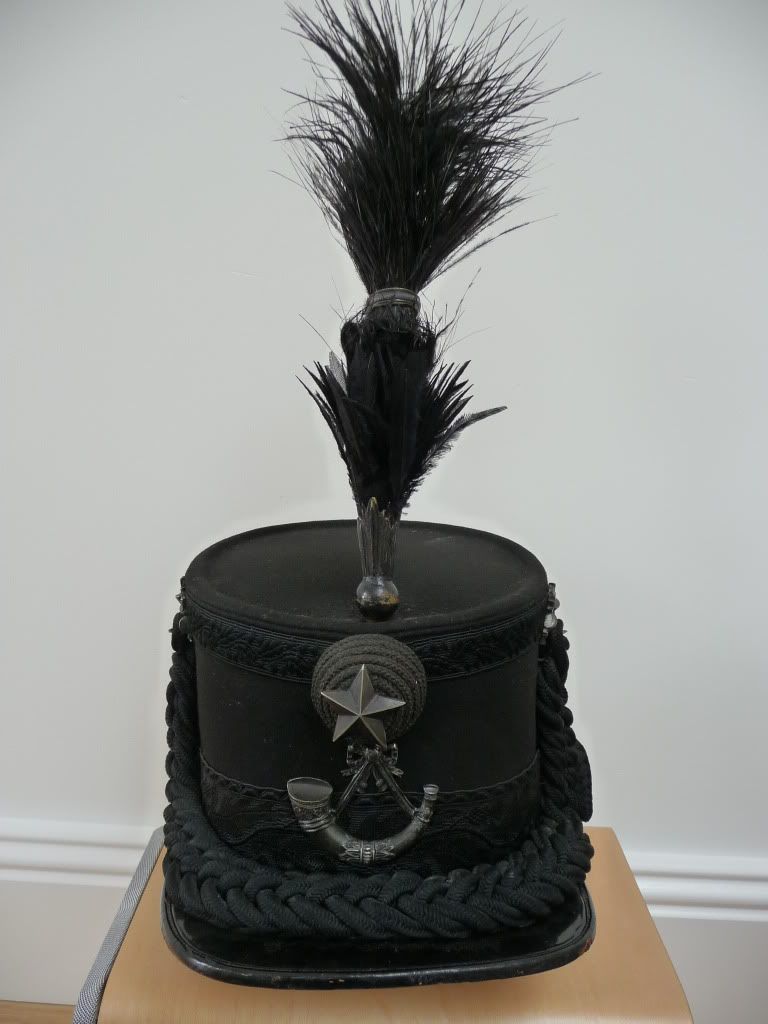
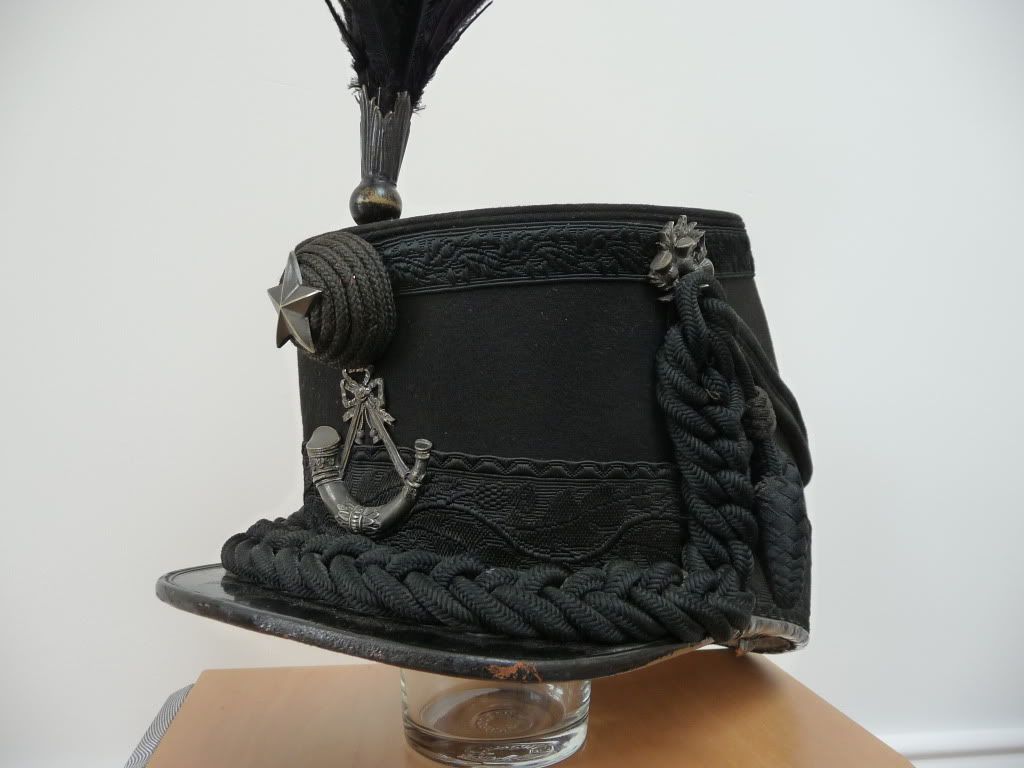 0
0 -
These are great! I had no idea such things ever existed, and I've been in quite a few pubs since 1967.
Patrick
0 -
Patrick - I knew Morris in the 1950's when he was researching 'The Washing of the Spears'. He was coming back a few years ago to write an up-date, but unfortunately died. I have read most of the current crop of books on this period and am still firmly of the belief that this is the best one. The detail and politics that you mention, are what makes it so accurate and you must remember that in the '50's there were still Zulus alive who fought at Isandlawana - not many. From the Boer War nearly all Afrikaaners had someone still alive.
Thanks Mervyn. I really enjoyed the book, but, as a recent (very mature) history post-graduate, I wondered if his interpretations were still seen as accurate and valid nowadays. Given the breadth of your reading and knowledge , it sounds as though they are. It takes some doing to write a book with so much information and interpretation in it, yet keep the narrative flowing in such an entertaining and exciting way.
I recently did a Battlefield Archaeology Masters with Tony Pollard , who did some of the archaeology at both Isandhlwana and Eshowe. He was at a reconstruction of the battle, and said the Zulus got so caught up in it , that they terrified the guys playing the British soldiers, when they charged.
Patrick
0 -
Mervyn, thanks for starting this thread, Fascinating stuff. I've just read 'The washing of the spears' by Donald R Morris. A lot of detail, but a very good read, particularly for somebody like me, who knew very little about the Zulus or the Anglo-Zulu wars.
Patrick
0 -
Leigh
I think you're spot on , thanks very much. I'm sure his initials were A.H, and I remembered this morning that the Inns would have fed other units and that he had also mentioned the Royal Engineers.
Thanks for coming back so quickly.
Regards
Patrick
Patrick
The problem re. The Inns of Court is that they trained officers who were then sent to other units, they did'nt take part in The Battle of Loos as a unit.
A quick check of Medal Index Cards shows about 9 or 10 Allan/Allen / A Hiltons, one of whom is an officer, Allan Howard Hilton, 2nd Lt in The Royal Engineers. His card does'nt have an entry for the 1914-15 Star being awarded, which you would expect for a man who served at Loos.
0 -
Back in the '60's and 70's (when I were a lad) I used to go to a dentist in Manchester named Alan Hilton. He was quite elderly and told me he'd been at the battle of Loos, and, I think, involved in some way with gas. He'd been in the Inns of Court and when he discovered I collected capbadges asked me if I could find him one fo the unit. I eventually tracked one down in a curio shop in Doncaster, and I'd never seen him so pleased about anything. If anybody has the knowledge to do any research on him, I'd be pleased to hear what is known about him.
Patrick
0 -
If this plate is genuine, it's missing the scroll underneath. However, I'm sure I've seen some discussion of these 'Bavarian' plates on pickelhaubes.com. They come from biscuit tins or something like that!
Patrick
0 -
Have a look at this thread on pickelhaubes.com about 'S' insignia. May be no connection at all with your items, but your post rang this bell
http://www.pickelhaubes.com/forum/viewtopic.php?t=5524
Patrick
0 -
Hi Stuart. A very nice piece ,and a great story. I've always thought pill boxes were strange items, particularly as I had to wear one in the Boys' Brigade, many years ago, and they were of no practical use at all! I've been looking at your post about cleaning as I've just acquired a nice officer's tunic (together with a blue cloth -see my latest post) and I was wondering how they cleaned the lace and bullion. I'm not planning to try!
Patrick
0 -
My most recent acquisition- Officer's Blue cloth QVC to Border Regiment 1st Volunteer Battalion. It's in immaculate condition. One oddity , however, is that division between the red and white enamel should be horizontal, whereas it clearly rises from left to right as you look at it. I thought this meant the enamel centre had been inserted out of true, but the dragon's position in relation to the lettering on the motto looks to be correct. A puzzle. Does anybody know if these enamel centres were glued in, or simply held in by the back plate? Even if the latter, I'm not going to start investigating, as I would end up irreperably damaging the various rods and fastenings on the plate
.

For those who are into uniforms (which I'm not , really), the helmet came with this Border Regiment Volunteer Captain's tunic, although there's no evidence that they belonged to the same person. I was wondering how they kept the bullion clean - I guess it was the Cream of Tatar and dried bread method that Stuart's been wondering about in relation to his Worcester pillbox?

Patrick
0 -
The Bosley's reference also seems to explain why the plate in the photo Stuart discovered appears to be voided , whilst the plate on the ebay helmet is solid. I used to live in Ayrshire and like Jock had never seen this spelling. That's one of the reasons I flagged this up to Stuart in the first place, along with the fact that the badge was nothing like the Ayrshire Yeomanry device I know and the fact that the helmet was such a strange mixture of parts. Well, we've all learned something!
Patrick
0 -
Latest acquisition - 2nd Volunteer Battalion, East Lancashire Regiment QVC blue cloth. Not the best photo, but short of time. I would welcome any information on the plate. It differs from the 'standard' 2nd VB plate , which simply has the sphinx on the tablet, bearing the word 'Egypt' set on a dark background, whereas this has the red rose of Lancashire under the tablet, as on the later cap badge, and the device is set against a rayed background. I thought this might have some reference to cyclists, but the pattern is unlike any other cyclists' 'wheel' that I've seen. It's also been suggested there might be some reference to the 59th foot, one of the antecedents, but I haven't checked this out properly. Stuart and others have been helping in the quest, but no joy so far.Patrick
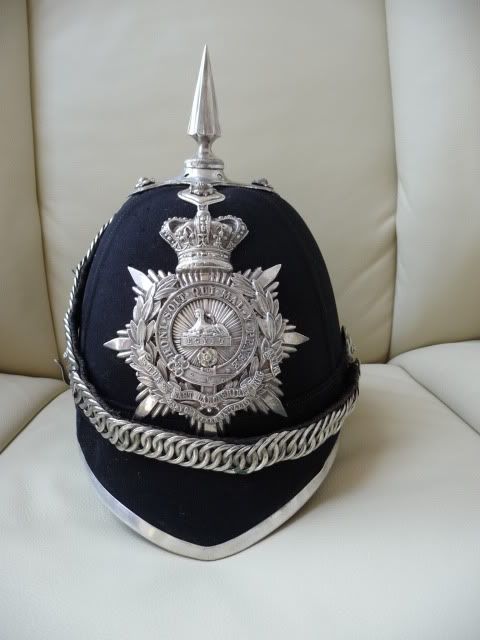 0
0 -
Hi Benny,
What a superb collection! I particularly like the 1st Lanarkshire material, and all the photos and the accompanying information are great. What are the models/mannequins?
Cheers
Patrick
0 -
Hi Stuart
Another very nice helmet. You're going to need more shelves soon!
Patrick
0 -
I'm not sure if this counts as a 'collection', but I have two clocks which people might be interested to see.
1. The first is an RAF sector clock, Type II made by Smith's Industries. The Astral movement is stamped with their logo and the Air Ministry mark dated 1942. Within the dial is the pencilled message in capital 'GIVE THEM HELL FROM US LADS'. The RAF insignia is clearly visible on the clock face, on which 5 minute segements are denoted by coloured triangles. This came from a reputable source and is not an ebay repro!
These clocks were used in Operations Rooms. The following is a description of how they were used- acknowledgement to the author of the website at http://www.winkton.n...s/sopleyww2.htm
'An article in the July 2005 issue of Flypast magazine describes the workings of the much larger operations and plotting room at RAF Uxbridge. This was used as the 11 Group command post in the Battle of Britain and would have possessed greater functionality than was required at Sopley. None the less the information gives some clues as to how operations were conducted.From the elevated cabin a Supervisor would oversee the entire situation whilst (possibly) an Allocator would allocate fighters and intercepts to individual fighter controllers, who would then control the radar interceptions. The controllers and their assistants were situated in the elevated cabin behind the controller, and in the reporting room. There would be direct phone lines to the wider air defence organisation, manned by an assistant.
On the plotting table metal arrows showing the position and direction of contacts. WAAFs used metal poles with magnetic tips to manipulate the arrows which were colour coded in co-ordination with an RAF sector clock with 5 min colour sectors to show the recency of the plot information. Plots more than ten minutes old were discarded, so only two colours of arrows would have been visible at any one time. If the station was busy, a WAAF supervisor maintained the wall mounted tote board and added additional data to the arrows such as a contact number and a classification of the contact as Hostile or Friendly. The tote board would have listed the local RAF night fighter stations, including Hurn and Middle Wallop, their night fighter squadrons with whom Sopley worked, the aircraft available and their status.'
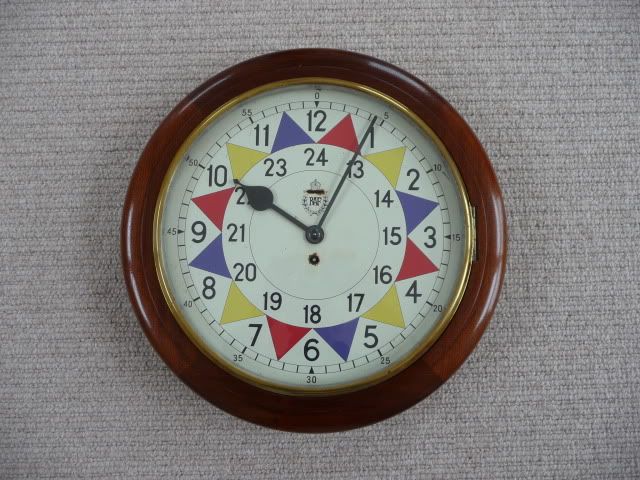
2.The second is a ship's clock, showing the War Dept arrow at 6 o'clock. Unusually, the main units on the dial are minutes, not hours, and there is a large , highly visible second hand. So far as I have been able to find out, such clocks were used in the operations rooms of ships, and it seems likely that the dial shows the minutes rather than the hours for speed and accuracy when keeping log books etc. or for timing a 'zigzag' manooeuvre. It has a stop-watch lever at 9 o'clock on the case and this reinforces the idea of its use for very accurate time-keeping. It's also been suggested that it might have been used for gunnery purposes.The knurled knob at 3 o'clock is for adjustment. If anybody has any ideas about this clock, please let me know.
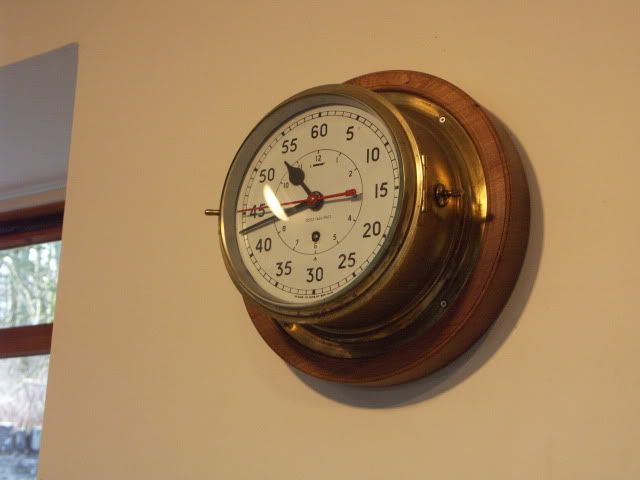
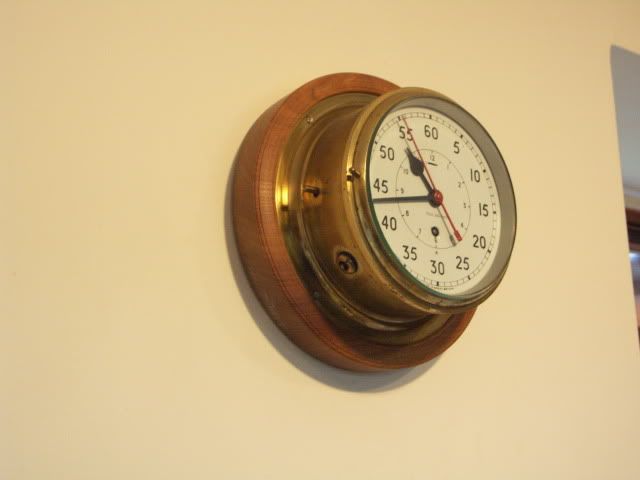
I know nothing about clocks- I just like having them on the wall. All care and maintenance is done by a friendly local horologist!
Patrick
0 -
Stuart, Leigh
Leigh's version(s) of the photo we've all looked at leave no doubt -same design. A good piece of work ! However, back to the question -why is this model so rare? Also, it doesn't seem to be standard issue to RND, given the helmets shown on my photo of the Hood at Gallipoi, although the men appear to be officers , who perhaps had a different model from seamen. Intriguing!
Patrick
0 -
Hi Stuart
I found the same photo on the web http://commons.wikimedia.org/wiki/File:Royal_Naval_Division_trench.jpg , which shows more men. I think you're right -I noticed particularly the helmet of the man on the left, scrambling out of the trench (rifle horizontal), and the man further to the right on the larger photo, who is pushing off with his right leg from the back wall of the trench . I tried blowing it up with Photoshop but this actually makes the detail less clear. Interesting that this photo is described in the link both as photo of the RND training, and of an actual charge.
Cheers
Patrick
0 -
I bought ready made frames for some cards I have. Not cheap, but they display well and do the job. Found them through an internet search for'cigarette card frames', but I can't remember where I got them. However, example link enclosed to give you an idea of what's available. http://www.cigarettecards.co.uk/frames.htm
Patrick
0 -
Stuart, I've no doubt it's genuine-great photos- but I don't see how the variation can have been expressly designed for the RND, given that it wasn't formed until 5 years later, hence my thought about a pre-war 'naval variation'. There's a photo in the book about the Hood, showing men wearing similar helmets at Gallipoli, but they don't seem to have the variation, and they have flashes on both sides. However, the men seem to be officers, so that may make a difference. Interesting that none of the other ranks in the background is wearing a sun helmet, although in a couple of other photos individuals are wearing them but the detail isn't clear. This has got me really intrigued and I've had no interest in sun helmets at all! I'll keep looking.
Patrick
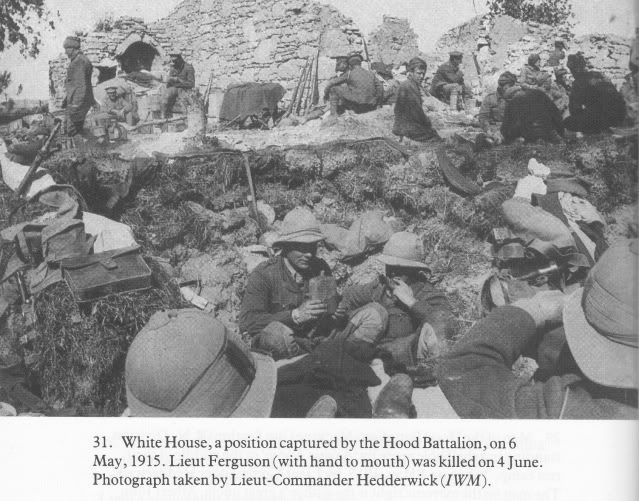 0
0 -
Hi Stuart- a very nice piece indeed. Given that the RND was a war-raised unit where might the helmet have been between 1909 and 1914? Does the date stamp denote the date of receipt into a store, or the date of first issue to an individual? If the latter, that could be consistent with the earlier, erased name. I know nothing at all about these type of helmets, but were they issued to the navy pre-war? If so, could the variation you mention be some naval characteristic? This seems unlikely since the helmet is khaki coloured !
I don't know much about the Drake Battalion, although I have its cap badge which is very elegant and distinctive. I've just read a book about the Hood Battalion by Leonard Sellers, which gives a lot of information about the raising of the RND and includes a number of mentions of Drake at Antwerp, Gallipoli and on the Western Front.
Patrick
0 -
An excellent and fascinating display . Thanks, Patrick
0 -
Stuart
The new blue cloth looks to be in cracking condition-superb gilt on the plate. What material is the red ground for the device made from?
Patrick
0 -
I'm sure Stuart is right. Apologies to other members for inadvertantly straying away from the purpose of this area .
Patrick
0 -
Patrick,
thanks for that. I am now watching it.
I suspect that we should be using PMs for this type of message.
Stuart
0


British helmets collection
in Great Britain: Militaria: Badges, Uniforms & Equipment
Posted
Hi Stuart
A good example of a forage cap, of the style of your avatar and others you've posted.
Cheers
Patrick